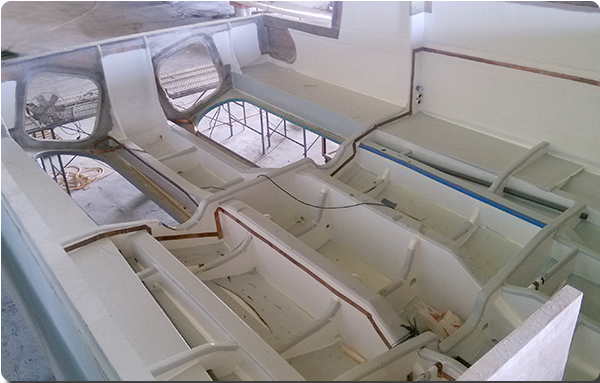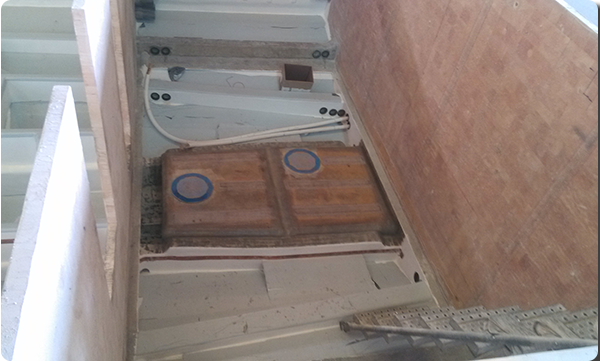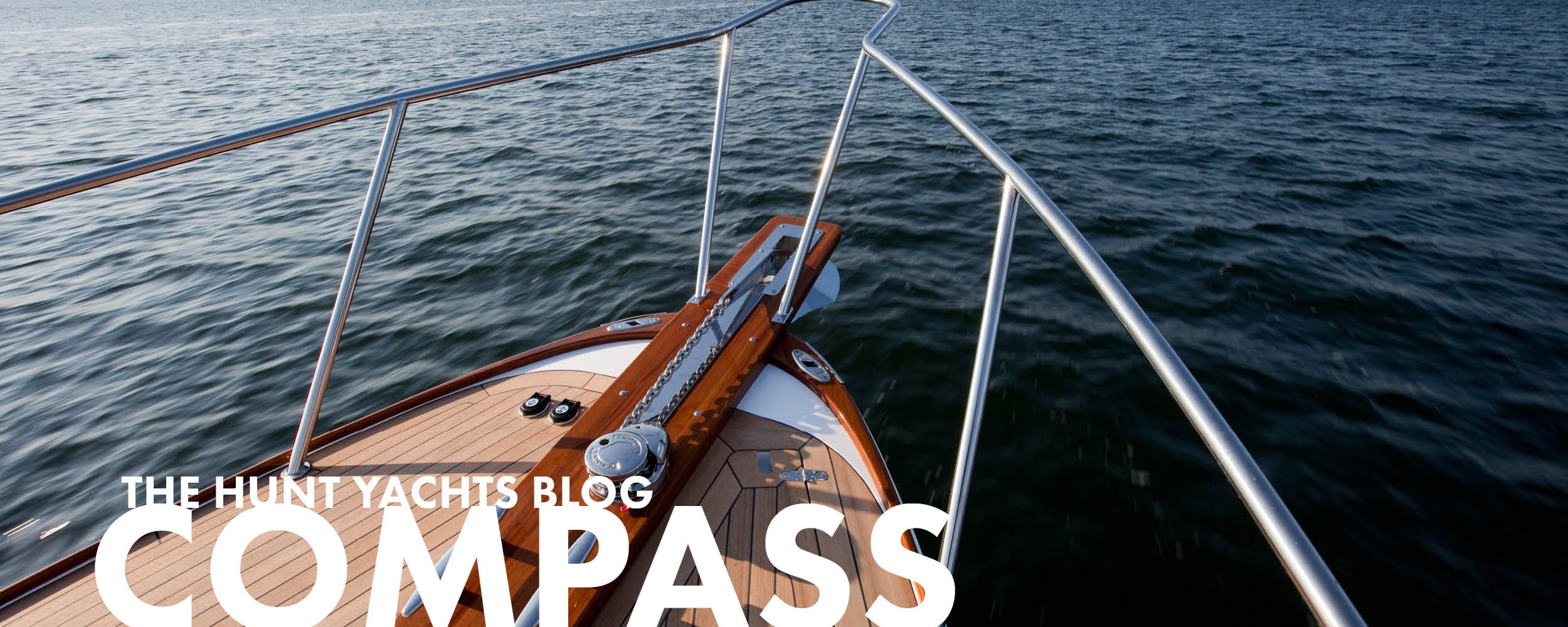
The Hunt 80 hull structure has been installed, with the stringers forward of the waterjet cut-outs in the bottom of the hull beefed up to serve as engine beds. The engine beds must be strong and stiff enough to support the engines and also heavy enough to absorb vibrations, preventing them from being transmitted through the rest of the yacht. The engine room is finished in white to improve visibility inside the space and make it easier to keep clean.

Bulkheads crossing from side to side are made of cored composites for great strength with less weight. They interlock with the longitudinal hull-bottom stringers and help the hull keep its shape, help prevent progressive flooding in the event of hull damage, and serve as a foundation for the deck and superstructure above. The fiberglass waste tanks, one of which is seen here fiberglassed into the hull bottom, do double duty adding structural integrity and impact resistance.

With any planing vessel, the hull must be strong enough to absorb the forces of open-ocean waves and point loads from drydocking, while staying as light as possible to optimize speed and efficiency. The hull structure reflects an intelligent design that accomplishes both of these goals.

Here, the yacht’s systems are being installed before the lower deck goes in.Tanks with their inspection and clean out plates, wiring bundles carrying 12v and 120v electrical power to the forward accommodations, ventilation ducting and plumbing runs for freshwater to the head and galley facilities are being roughed in. Once the lower accommodations deck is in place, finish electrical, mechanical, HVAC and plumbing work can take place.

